
- Lapoint
- Blog
- The Wetsuit Guide: How to choose the right wetsuit according to size, thickness and type
The Wetsuit Guide: How to choose the right wetsuit according to size, thickness and type
February 17, 2025Many different gears are helpful when surfing cooler waters, and the wetsuit has the number one spot on that list. But the wetsuit market may seem like a jungle on its own. In this guide, we will lead you through the different variants of wetsuits and wetsuit accessories. Here we’ll answer the questions “Which size should I get?”, “How does a wetsuit work” and many more, to untimely answer your big question: “Which wetsuit should I get?”

In this guide, we walk you through:
Why you need a wetsuit
Choosing the right size
Which thickness you should get
The different types of wetsuits
Wetsuit entry systems
Wetsuit accessories
Tips & Tricks
Summary
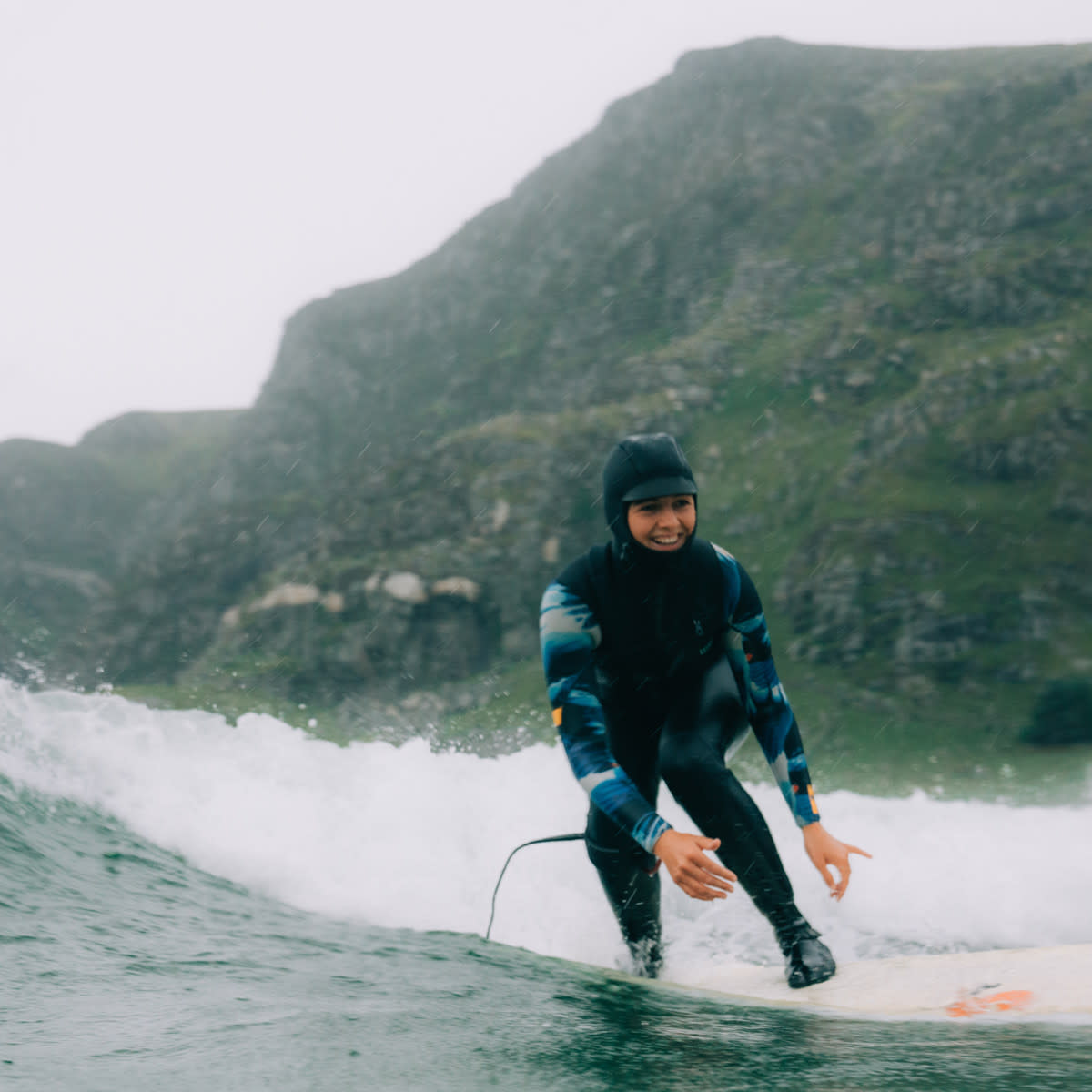
To make the search for the right wetsuit for you easier, we split the guide up in three main sections. The three main things to know when buying a wetsuit are:
The size and fit of the wetsuit
The thickness of the wetsuit
The type of the wetsuit
How does a wetsuit work and why do you need one?
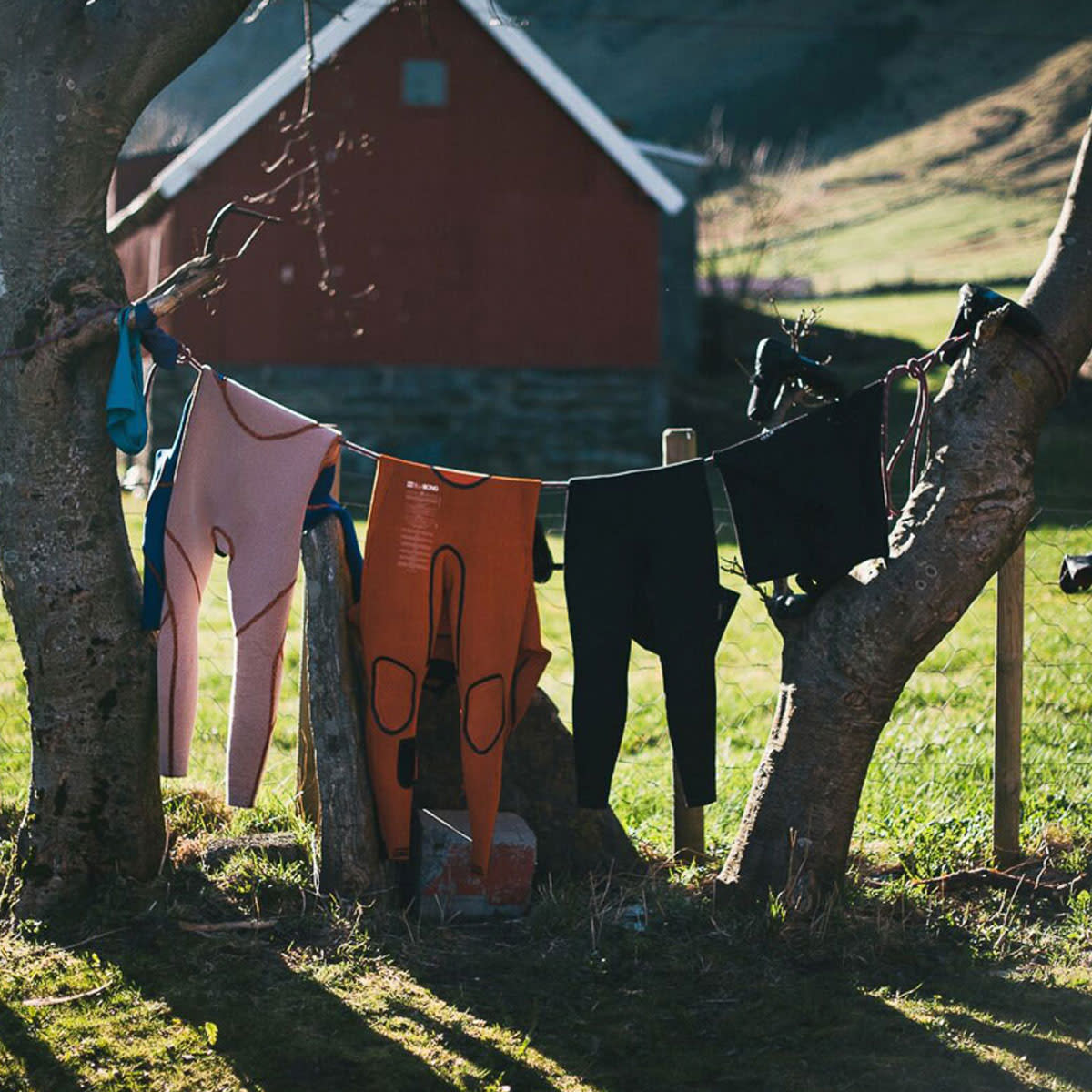
The short answer: the purpose of a wetsuit is to keep your body warm during a surf session in colder waters and during winter surfing.
Wetsuits are made from a material called neoprene which is a synthetic rubber that can maintain flexibility in different temperatures. There are many different types and thicknesses of wetsuits and every one of them has its own purpose. Your wetsuit works as your armour against the cold and the neoprene is your protection. The wetsuit captures a thin layer of water between the suit and your body, your body is warming up the water and it thereby keep you warm.
Size & Fit: How tight should a wetsuit be?
Let’s start with the common question “How do I know if the wetsuit fits right?”. It's essential to get the right size to surf comfortably without feeling limited. It should feel like a second skin and its job is to keep you warm in the water. It needs to be just right, not too tight nor too loose.
You don’t want your wetsuit to be too tight, since this will restrict your flexibility and maybe even make breathing uncomfortable. A good-sized wetsuit will create a thin layer of warm water between the suit and your body. If the wetsuit is too big then excessive cold water will get in through the openings, and it will result in you getting flushed.

Flushing is a surfing term that means that the thin layer of warm water in the wetsuit is getting flushed out and replaced with new, cold water. When you’re constantly getting flushed, the thickness of the wetsuit won’t matter, you will get cold anyway.
Keep in mind: Just like sizes can vary in clothing stores, surf brand sizes can do too. If you buy a certain size in one brand, that doesn’t necessarily mean that it’s a good size in another. Take your time to look at the size chart for the specific brand you’re buying your wetsuit from to be safe.
How does a well-fitting wetsuit feel like?
It should be a bit of a challenge to put the wetsuit on, but once it's on you should to be able to move freely
Not too tight at the collar, your breathing shouldn't be uncomfortable
Not too loose, your wetsuit shouldn’t be getting wrinkled up
Not too loose that water gets in and increase the risk of flushing
The wetsuit should sit comfortably and nicely fitted on the shoulders
There shouldn’t be any access neoprene fabrics in the armpits
You should be able to do a squat and stretch your arms in the suit with just a slight restriction
The kneepads should be right over your knees
The wetsuit should end at the wrists and ankles
There shouldn’t be any excess fabric on the suit once its put on, it should lay flat and smooth on your body
Wetsuit size table
Take these charts from Deeply as a guide for wetsuit sizes, but keep in mind that not all brand’s sizes look the same. The wetsuit will extend the more you use it so it must be tight (but of course not too tight).
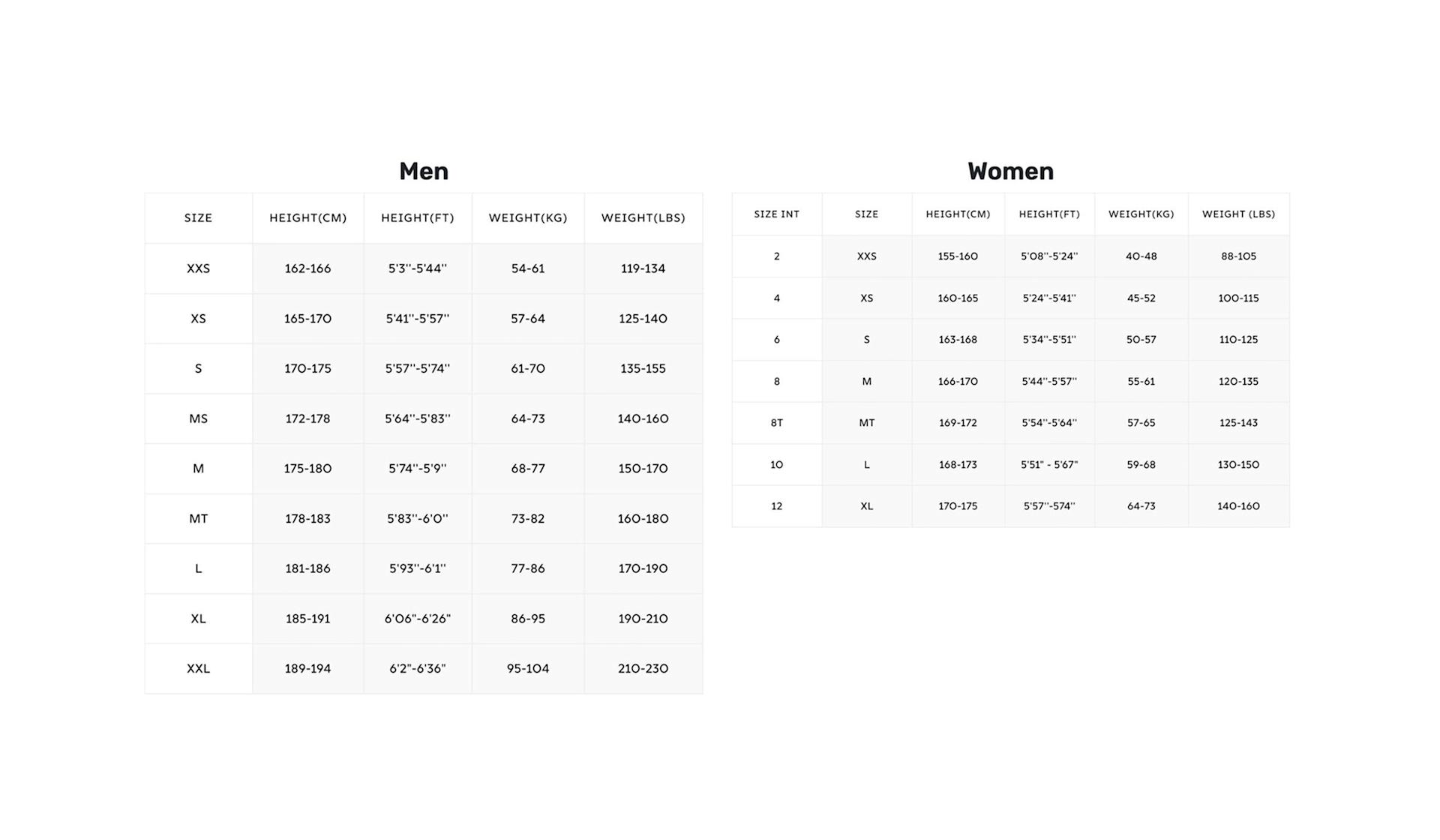
Thickness: How many millimeters should your wetsuit be?

The thickness is generally the most important aspect when buying a wetsuit since it determines how warm the wetsuit will be. Generally speaking, the thicker the wetsuit is, the warmer you will be in it. Before you buy the wetsuit ask yourself these questions:
What’s the water temperature where you will be surfing?
Will you surf in different temperatures that may require a few different wetsuits?
What do the numbers mean?

The numbers you see on the wetsuit refer to the thickness of the neoprene in the torso and the extremities, measured in millimeters. The thicker the neoprene is, the warmer the suit is.
For example, let’s look at a 4/3 wetsuit: The 4 means that the wetsuit neoprene is 4 millimeters throughout the torso, and the 3 means that the wetsuit is 3 millimeters over the extremities (arms and legs). The torso area is warmer than the arms and legs to protect the core body heat. Less neoprene means that the wetsuit will be more flexible, so the neoprene is thinner in the extremities which allows you to move more freely. The wetsuits surfers use are usually between 1-6 millimeters.
How about a 6/5/4 wetsuit? For a wetsuit with only one number, it refers to the thickness of the neoprene in the torso only. With two numbers it refers to the torso and the extremities. When the wetsuit has three numbers it refers to:
6/5/4
6 = The thickness of the torso
5 = The thickness of the legs
4 = The thickness of the arms
Wetsuit thickness table: Get the right thickness for the water temperature
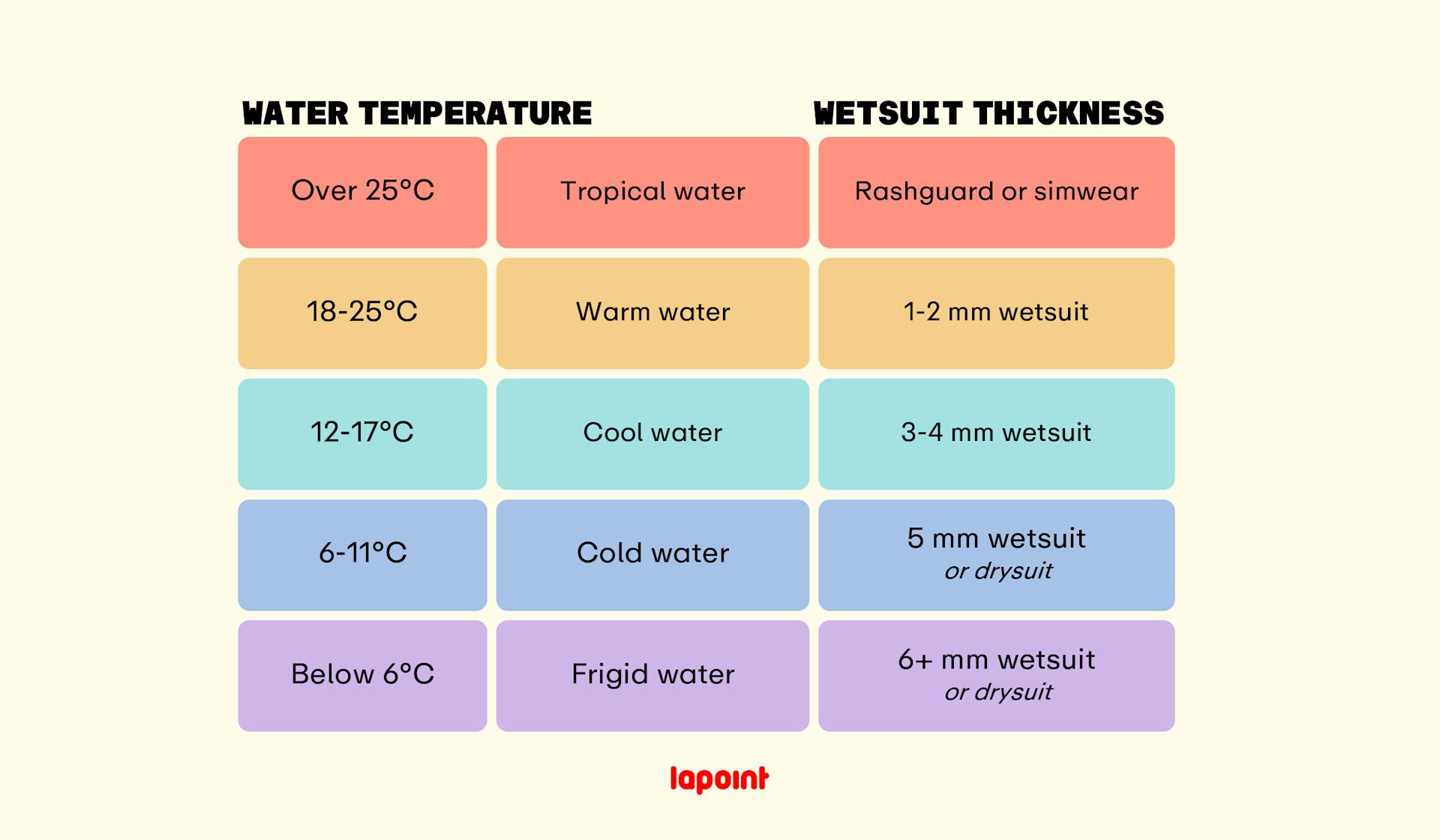
For warm and tropical water

Rashguard or swimwear: If the water temperature is over 25°C, you normally don't need a wetsuit and can use a rashguard instead. You can also surf in your bikini or board shorts.
1 to 2 mm wetsuit: This is a suitable thickness for water around 20°C, you won't need any surf accessories. A short wetsuit like a springsuit or a short John/Jane would work well!
For cool water
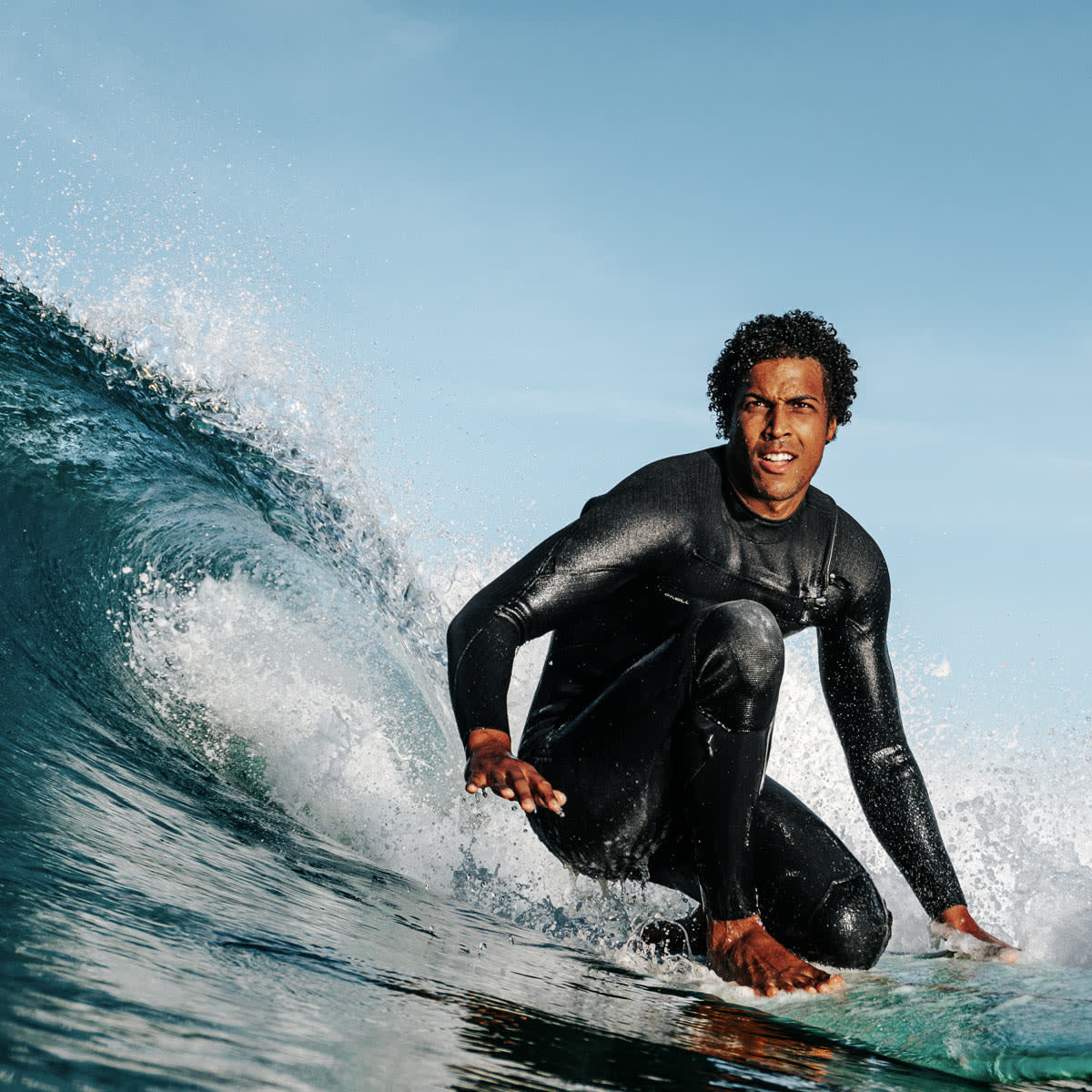
3 mm wetsuit: When the water temperature drops below balmy 20°C, a 3 mm wetsuit is a nice option. We’d suggest a 3/2 mm for some extra flexibility. No need for a hood, gloves, or boots.
4 mm wetsuit: Heading into slightly cooler water around 15°C? It’s time to put on a thicker wetsuit and maybe even a pair of boots! In our 10 years of running surfcamps in Portugal and Morocco we’ve spent a lot of time trying to find the perfect 4/3. Take our word for it, the Deeply Explorer ticks all the boxes and then some!
For seriously cold water
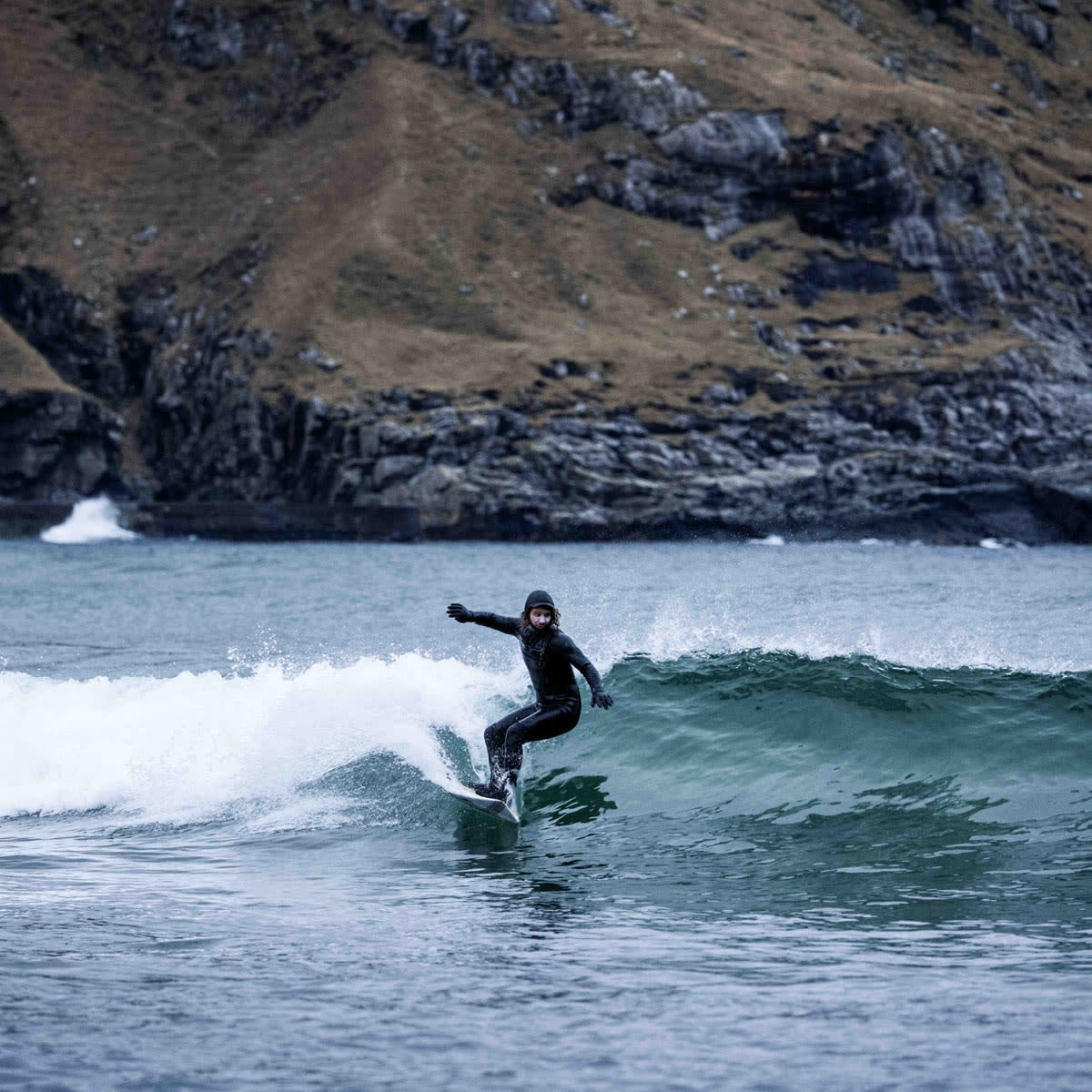
5 mm wetsuit: When the water is around 10°C you need a wetsuit in a thickness of around 5 mm. We recommend that you also wear a hood, gloves, and boots.
6+ mm wetsuit: When the water temperature drops under 6°C, it’s time to bring out the really thick wetsuits! You don’t want to risk getting hypothermia so a hood, thick gloves, and boots are definitely recommended. A hooded full wetsuit would be preferable here. Whenever the Lapoint staff aren’t surfing waves round the world we love scoring waves back home in Scandinavia. Trust us, we have yet to find better 6/5/4 bang for your buck than the Premium SC2.
Note: Take these guidelines as suggestions, not as cold hard facts. The thickness you need can depend on more than just the water temperature. Like how warm the air temperature is, how much wind is present, your activity level while surfing, and your tolerance to cold water.
Wetsuit type: Which length suits you?
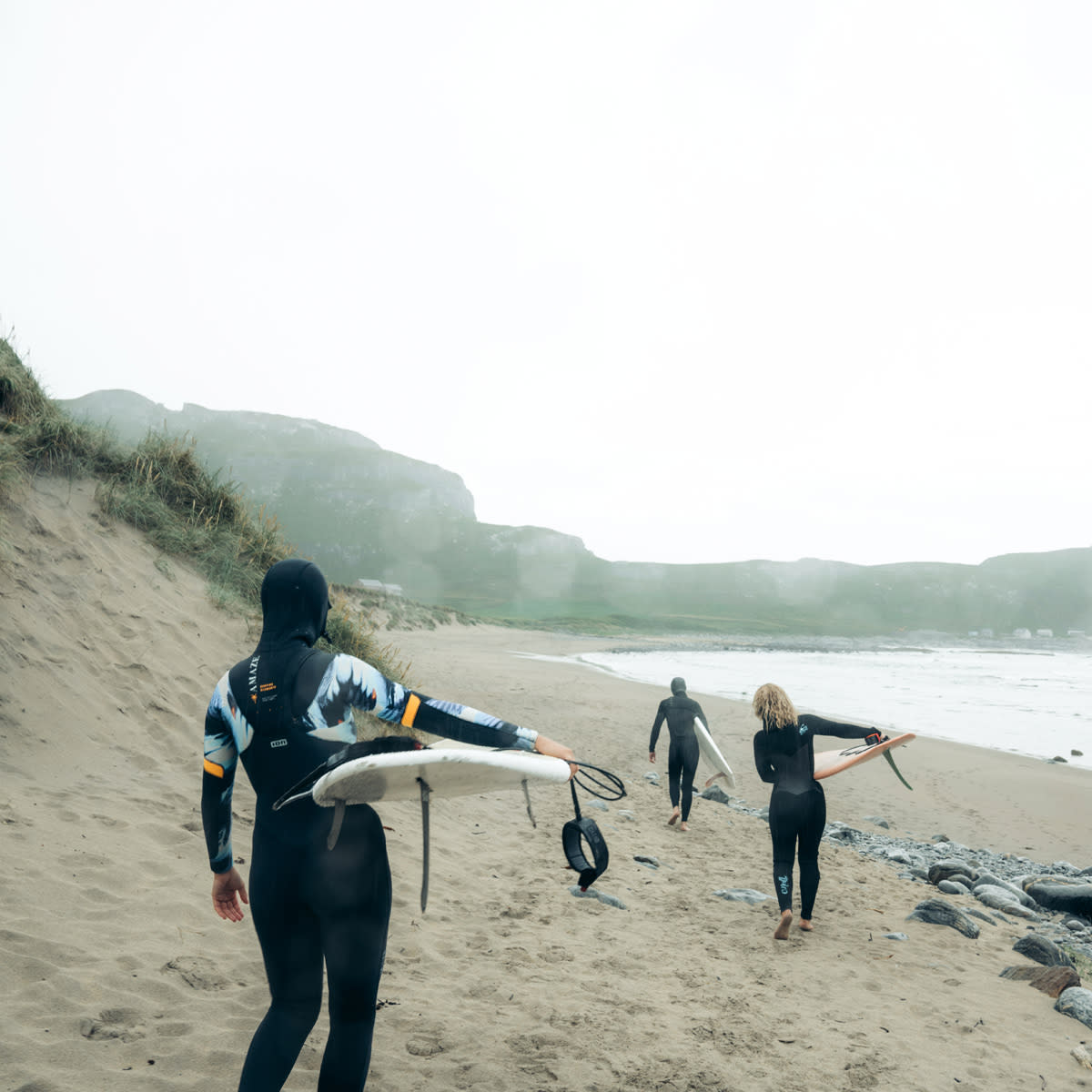
Pick your wetsuit type according to your preferences and the temperature of the water you want to surf in. There are a lot of different types of wetsuits, here are some common ones:
Hooded full wetsuits
Full wetsuits
Springsuits
Long John/Jane wetsuit
Short John/Jane wetsuit
Short arm steamer wetsuit
Rashguards (technically not a wetsuit but an alternative!)
Hooded full wetsuits
A hooded wetsuit is a fullsuit with a hood to keep your head and ears nice and warm. This type of wetsuit is preferably used in cold and frigid water. If you plan on keeping your surfing going throughout Scandinavian winter a hooded fullsuit is an essential. Browse through our selection of hooded fullsuits below. They’ve been selected with care by a team that live and breathe cold water surfing. Trust us, we want to be warm too!
Full wetsuits
As the name reveals, the full wetsuit is covering the whole body (to wrists and ankles) and keeps you from getting cold while surfing. They are made in a variety of thicknesses for all sorts of water temperatures and are a very popular model.
Springsuits
The springsuits are commonly used in the transitional seasons when it’s too warm for a full-length suit but not quite warm enough for a rashguard. They come in many variations, one of which is short-legged with long sleeves.
Long John/Jane wetsuit
This suit looks just like the full suit, with the difference being that it lacks sleeves and is usually made up of thinner neoprene. The benefit of this wetsuit is that you don’t have any restrictions on your arms when you paddle. You also have the Short John/Jane variant with short legs
Short arm steamer wetsuit
Basically the same type of wetsuit as the short John/Jane except that the arms are slightly longer and resemble t-shirt arms.
Rashguards
A rashguard is a shirt that’s made of materials with UV resistance, usually in Lyrca material. This is the perfect option when you surf in tropical water where you don’t want to wear a wetsuit but still want something to cover your torso from the sun.
Wetsuit zipper type: What entry system should you get?
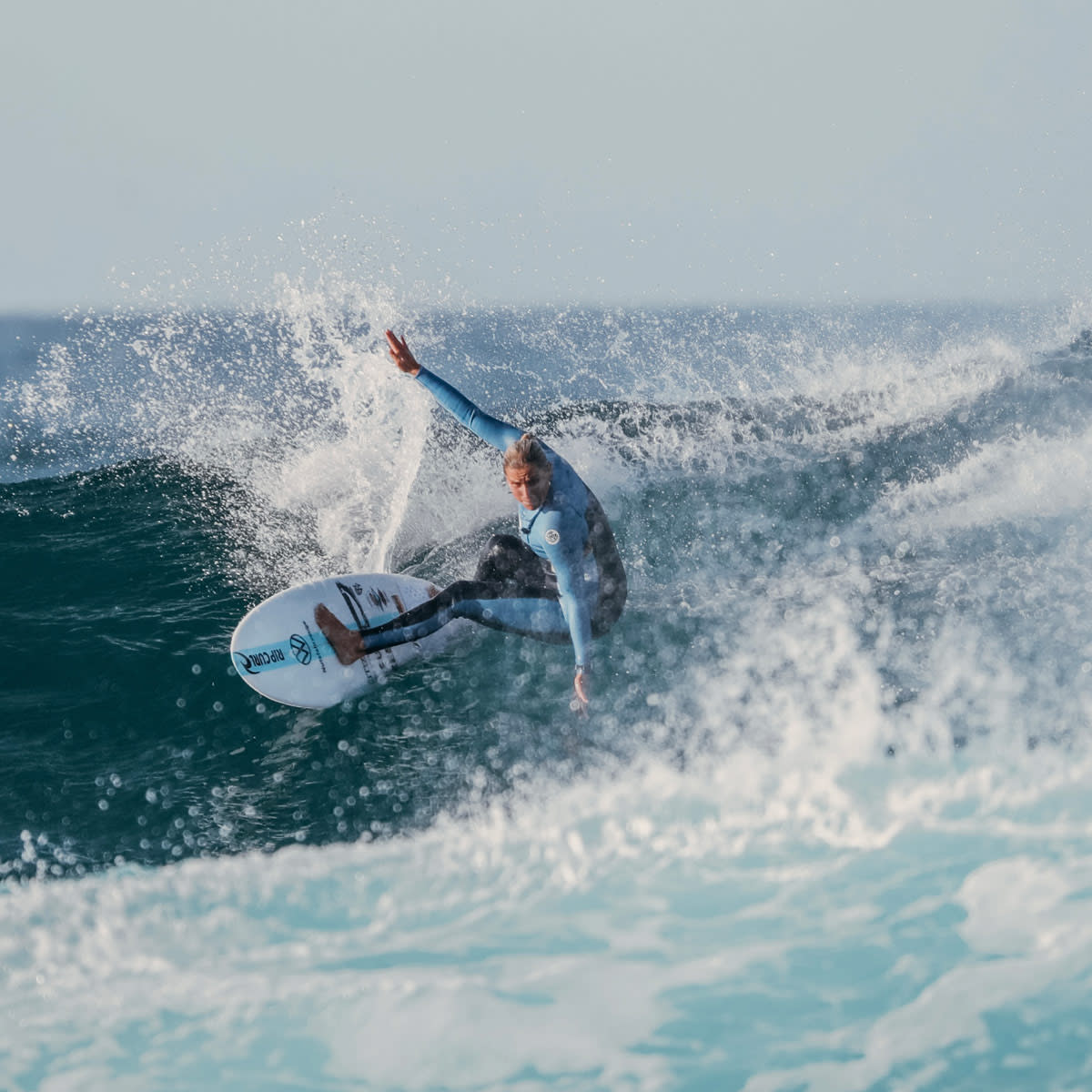
Now that you know the size and thickness of your wetsuit, it’s time to look into which type you want. It’s all about your personal style, preference, and how much money you want to spend on it. There are different ways to zip your wetsuit and different types of suits.
Here are the three main types of zippers:
Back-zip wetsuit
Chest-zip wetsuits
Zipperless wetsuits
Back-zip wetsuits
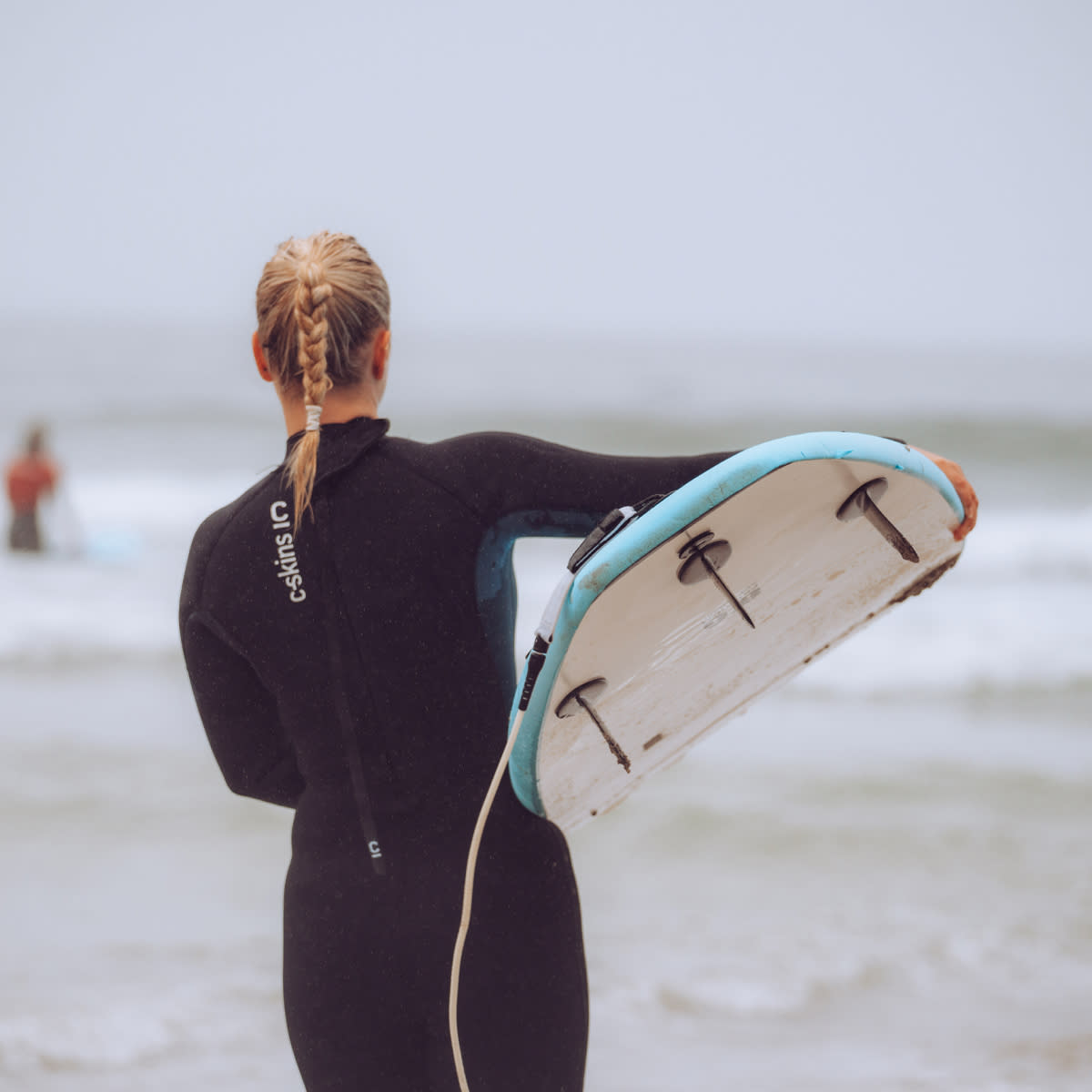
This wetsuit has its zipper along the spine and is therefore easy to put on and take off. This wetsuit is generally the most wallet-friendly option if you are on a budget. The cons with the back zip are that it’s less resistant to flushing than the chest zip and offers less flexibility for your torso.
Pros and cons:
+ Generally easiest to take on and off
+ Wallet-friendly
– Not the best resistance against flushing
– Water might get in through the back seams
Chest-zip wetsuits

This wetsuit zips over the chest with a neck cut for your head to enter through, which gives you a tight and sealed cover at the neckline that protects water from coming in.
Pros and cons:
+ Good option for keeping you warm
+ More comfortable than the back zip at the torso area
– Can be a bit tricky to take on and off
Zipperless wetsuits

The zipperless is a wetsuit that doesn’t have any zipper at all. This is most common for wetsuits that prioritize moving around freely over warmth, it’s usually a feature for lightweight wetsuits.
Pros and cons:
+ Great mobility and comfort
+ No risk of zippers breaking
– Usually thinner than wetsuits with zippers
– Usually more pricy than wetsuits with zippers
Wetsuit accessories
If you’re going to surf in cool and cold locations, it can be nice to use some surf gear accessories to keep yourself warm. When the water is 15 degrees and colder, these additional pieces come in handy:
Wetsuit boots: The boots are great for protecting your feet and toes from the cold water and give you extra protection on rough ocean floors
Wetsuit gloves: The glows and mittens are made out of neoprene and come in different variations like five-finger glows for dexterity and mittens that keep your hands extra warm.
The Low Down: Our Best Tips and Tricks

How to get your wetsuit on and off
A wetsuit should feel like a second skin, but that might make it a bit hard to put on and take off, so here are some tips on how to do so in the easiest way possible (that will save you time and effort!).
Check if you bought a wetsuit that you zip at the chest or if the zipper is on the back, then make sure to put it on the right way. Nothing screams kook at the beach like a wetsuit that is put on backward.
An annoying mistake to discover once you got the whole wetsuit on is if it turns out to be inside out, then you need to start all over from the beginning.
When it’s time to take the wetsuit off you simply peel it and turn it inside out as you go from neck to feet.
Put on the gloves last and take them off first.
Avoid using your fingernails when putting it on and off, use your fingertips!
Be careful and calm, you can damage the seams and the neoprene if you pull too hard.
If you are wearing booties: keep them under the wetsuit, otherwise the water coming into the wetsuit and out at the openings at the ankles will go straight into the booties.
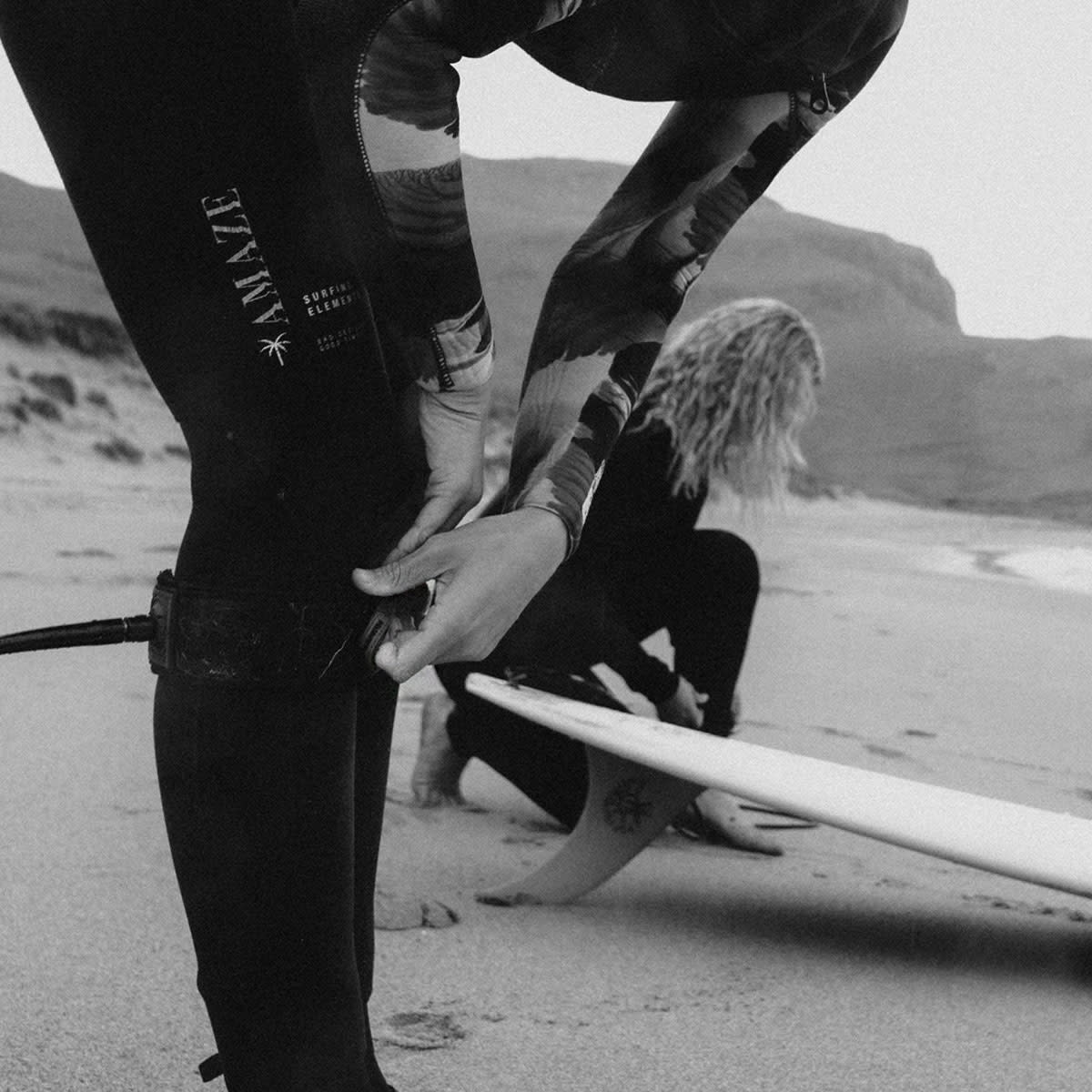
Put on the wetsuit step by step:
Feet: Start with getting the wetsuit over your feet and ankles.
Knees: The kneepads should be right over your knees. Make sure that there aren’t any wrinkles on the legs or the backside of your knees.
Hips: Carefully pull the suit over your hips so it fits nicely and is tight.
Torso: Look carefully that there aren’t any wrinkles or extra fabric anywhere before you get your arms in.
Arms: Put one arm in at a time and remember to not twist the fabric. You don’t want there to be a lot of space between the suit and your armpits, that will limit your flexibility when paddling!
Final check: Depending on what kind of wetsuit you’re using, zip up the zipper, make some adjustments so everything fits comfortably and you’re ready to hit the waves!
How to wash a wetsuit
When you finished your surf session and removed your wetsuit you should rinse it with fresh water to get all the sand and ocean water out, preferably as soon as you can (clean both on the inside and outside!). Wetsuits should be hand-washed. You can use special wetsuit products for this, but a mild non-detergent soap works just fine.
How to dry a wetsuit
Hang up the wetsuit inside-out to dry after washing. Wetsuits should never go into the washing machine, be put in the dryer, or hang on a wire hanger (it’s not good for the neoprene in the suit).
What do you wear under a wetsuit?
It’s up to you! Some feel more comfortable wearing boardshorts or a bikini under, others swear by going commando. The sky’s the limit.
Summary

Now you know everything you need to buy the right wetsuit for you, but just to summarize:
Check which size you need
Look which thickness is suitable for the temperature of the water you’ll surf in
Choose which type of wetsuit and zipping you prefer
You are ready to get the right wetsuit for you!
Happy surfing!
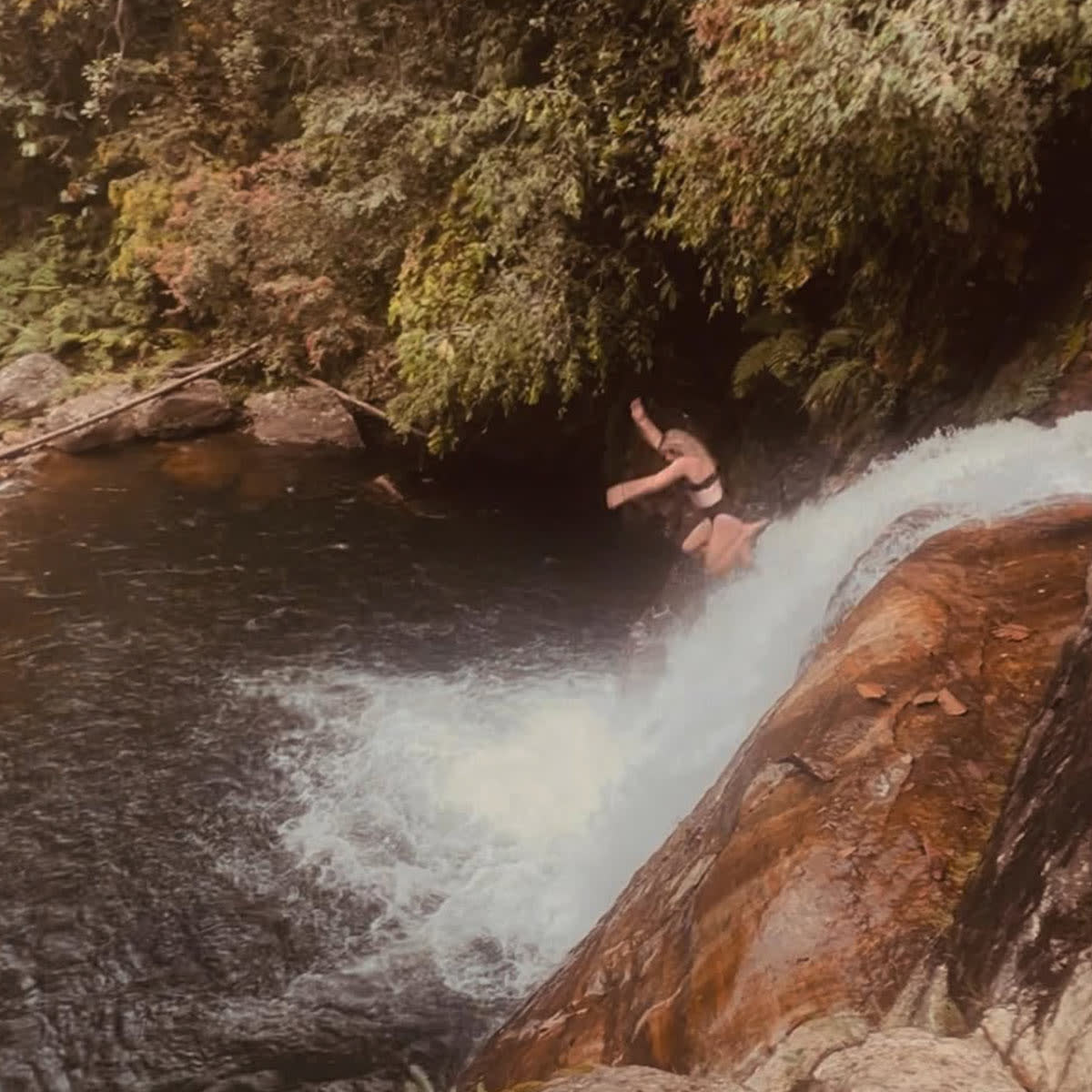
Beatrice Lindfors
About the author: My name is Beatrice, but Bea for short, and I’ve been a writer and content creator for Lapoint since 2022. My life revolves around my laptop and backpack as I travel the world (always with a stop in Ericeira; the camp vibe there and the Portuguese sunset have my heart). Life goal? Visit every country.
Obsession? The Sri Lanka waves, the Atlantic Ocean and tracking down the best coffee –whichever my current location is.

